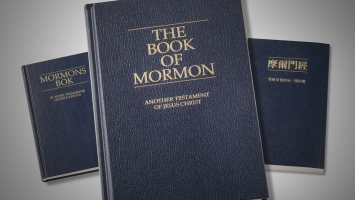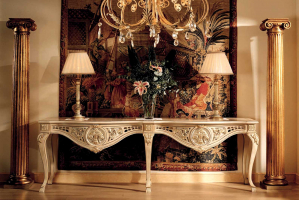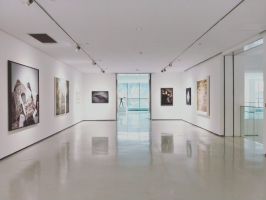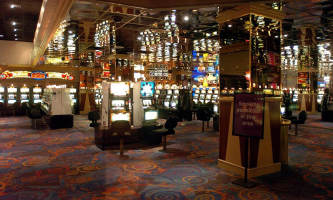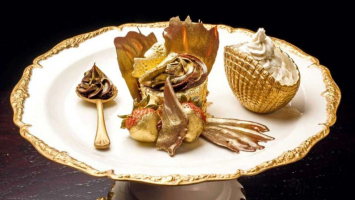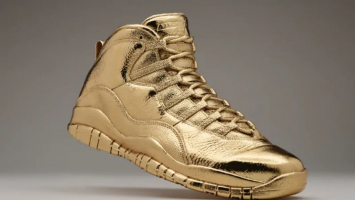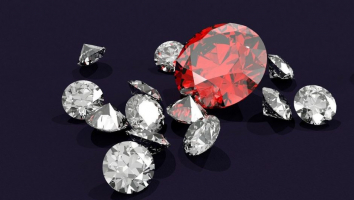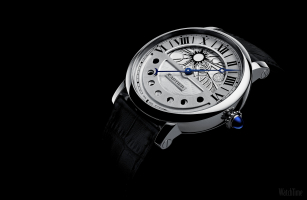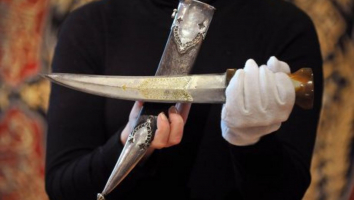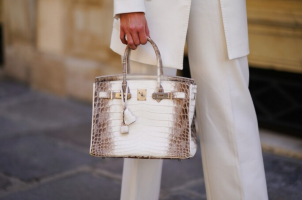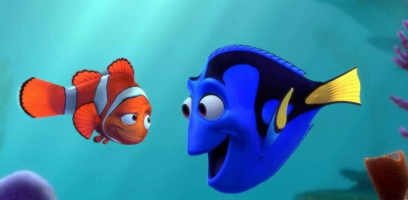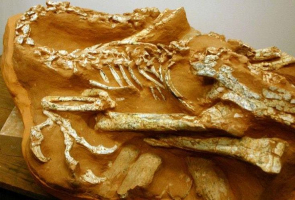Top 10 Most Expensive Memorabilia Ever Sold
The act of collecting memorabilia is becoming increasingly popular. For most fans and conscientious collectors, the cost of memorabilia should never be a ... read more...deterrent to obtaining any item they desire, whether current or old. Some are willing to spend millions of dollars for these items. Below are the most expensive memorabilia ever sold.
-
Hunt Auctions at Yankee Stadium auctioned the record-breaking jersey as part of a collection of items relating to "The Sultan of Swat," as Ruth was also known. The auction firm said in a statement that it worked with the baseball legend's family to curate the huge display, which included items from "exclusive third-party collections." According to the auction house, a Babe Ruth New York Yankees jersey from 1928-1930 sold for $5.64 million, making it the most expensive item of sports memorabilia ever sold.
The item was part of a trove of belongings put up for auction by Ruth's family, which included family portraits, hunting gloves, and a luggage Ruth took to Japan in 1934. The light gray flannel shirt is in good condition, with its original drawstrings, buttons, and the name "Ruth" embroidered into the collar and the word "Yankees" emblazoned over the chest. The jersey is from the later half of Ruth's career, from 1928 to 1930, when he negotiated and eventually obtained an exceptional two-year contract of $80,000.
Price: $5.64 million
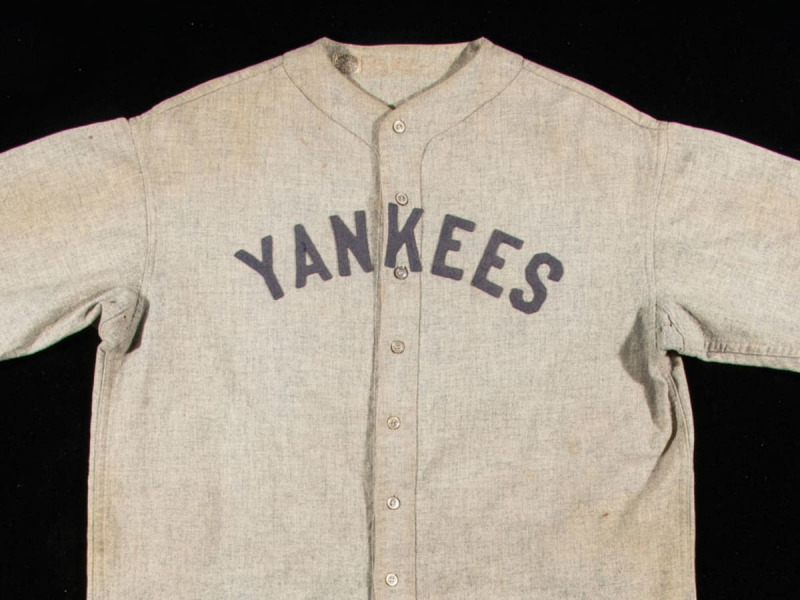
Photo: Sports Illustrated 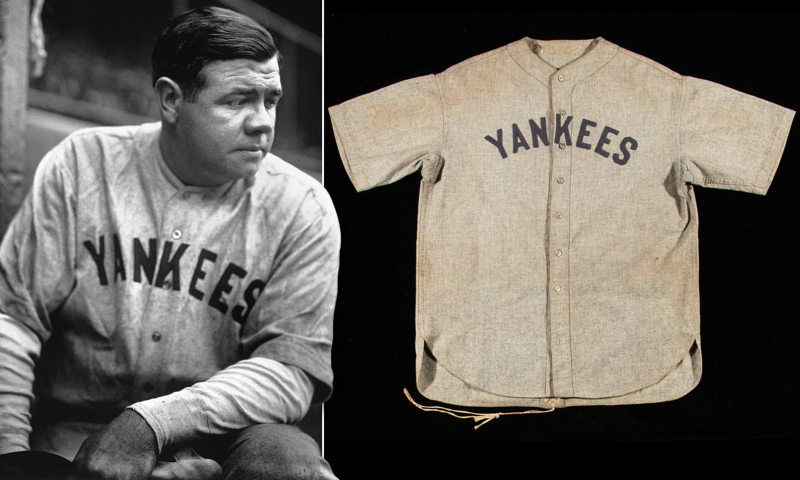
Photo: vetyvet.com -
In May 1962, a particular performance of a well-known tune transformed a song that had been sung countless times into a historic occasion. Marilyn Monroe's breathy, sensuous rendition of "Happy Birthday" at a party for President John F. Kennedy is still the most renowned rendition of the song—and arguably the most famous rendition of any song ever!
Monroe's performance was so memorable that the jaw-dropping classic gown she wore became a historical fashion piece that has sold for millions of dollars.
According to Worn on This Day: The Clothes That Made History, the dress was sheer and form-fitting, sprinkled with brilliant beads, and had almost 2,500 rhinestones. Monroe was said to have had to be stitched into the dress due to its tightness. According to Vintage News, she also chose to wear nothing below it so that the fit would be perfect, purposefully courting the "scandalous" conversation that would inevitably surround the dress and her performance.
Another little-known fact about the "Happy Birthday" dress is that it was designed by a recent college graduate. It was a young Bob Mackie's first post-grad endeavor, and he continues to design famous pieces and earn accolades to this day.
Price: $4.8 million
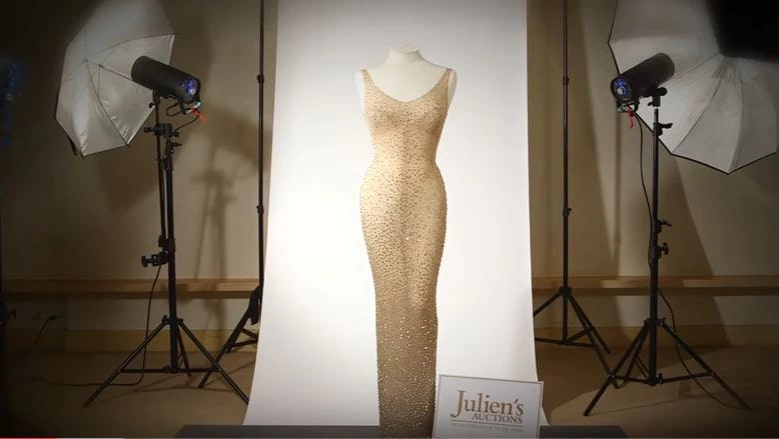
Photo: ABC 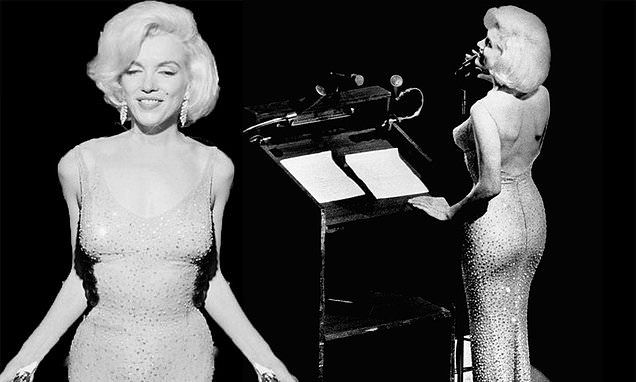
Photo: Daily Mail -
The third most expensive memorabilia ever sold is ‘The Girl’ Ivory Pleated ‘Subway’ Dress. In Billy Wilder's 1955 picture The Seven Year Itch, Marilyn Monroe wore this white dress. Costume designer William Travilla designed the gown, which was used in one of the film's most famous sequences. The image of Monroe in the white dress standing above a subway grating blowing up the dress has been considered as one of the most iconic images of the twentieth century.
The dress is a light-colored ivory cocktail dress in a style popular in the 1950s and 1960s. The plunging neckline of the halter-style bodice is formed of two delicately pleated fabric pieces that join together behind the neck, leaving the wearer's arms, shoulders, and back naked. The halter is fastened to a band directly beneath the breasts. From there to the natural waistline, the garment clings snugly. A soft, narrow self belt was wrapped around the torso, crisscrossed in front, and then tied into a small clean bow at the waist, on the left side of the front. A delicately pleated skirt reaches mid-calf or below the calf length below the waistline. There is a zipper at the back of the bodice, and tiny buttons at the back of the halter.
Reynolds sold her Hollywood memorabilia collection in 2011 to avoid bankruptcy, and the pleated dress, which has become one of the most famous costumes in film history, sold for $4.6 million at auction.
Price: $4.6 million
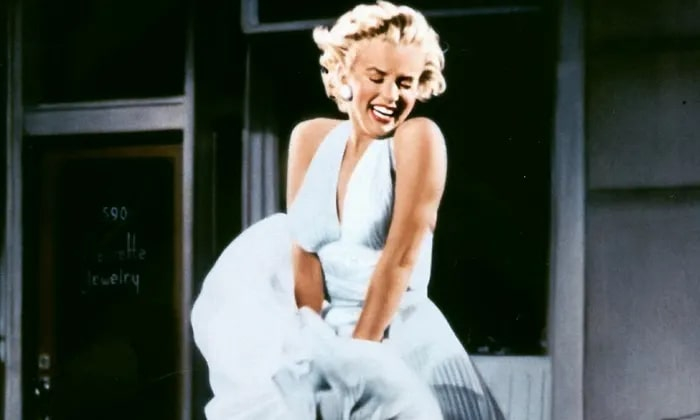
Photo: The Guardian 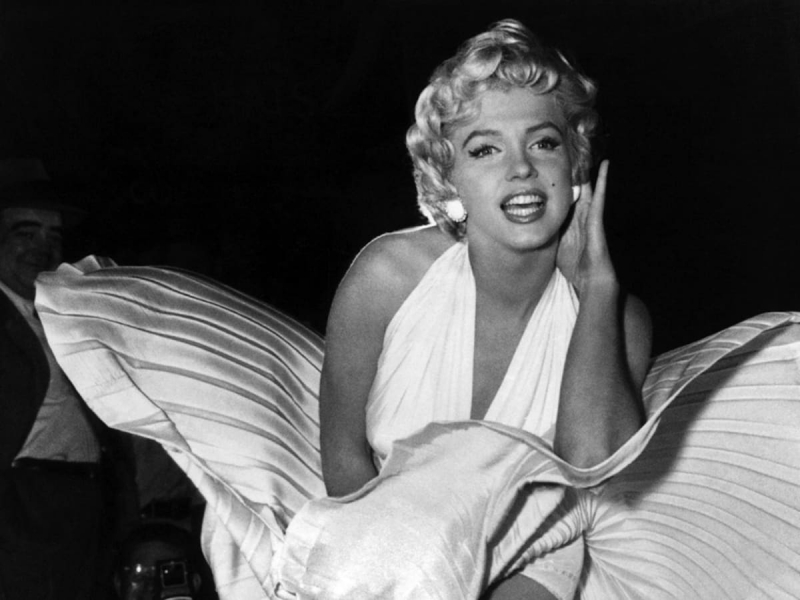
Photo: Biography -
Eliza Doolittle's showy black and white dress worn at the Royal Ascot Races is one of Miss Hepburn's most memorable cinematic looks. Cecil Beaton, a renowned English costume designer famed for his traditionally cut, timeless shapes, created this magnificent garment for the actress. As a curator of beautiful and creative designs for film and stage celebrities like Audrey, Beaton is up there with the best of them.
Layers upon layers of lace ruffles, long sleeves, a mermaid silhouette, black and white striped ribbons, and a larger-than-life hat topped with flowers characterize this magnificent costume. While wearing this attire, no one in the film could have suspected that Hepburn's character wasn't a born-and-bred member of high society.
Audrey Hepburn's Ascot dress from the film "My Fair Lady" sold for a stunning $4.4 million at auction. It is still the most expensive item Profiles In History has ever sold. This is undoubtedly one of the most iconic movie costumes ever created, as well as one of Beaton's most acclaimed masterpieces. In 1964, he won the Academy Award for Best Costume Design for his work on My Fair Lady.
Price: $4.5 million
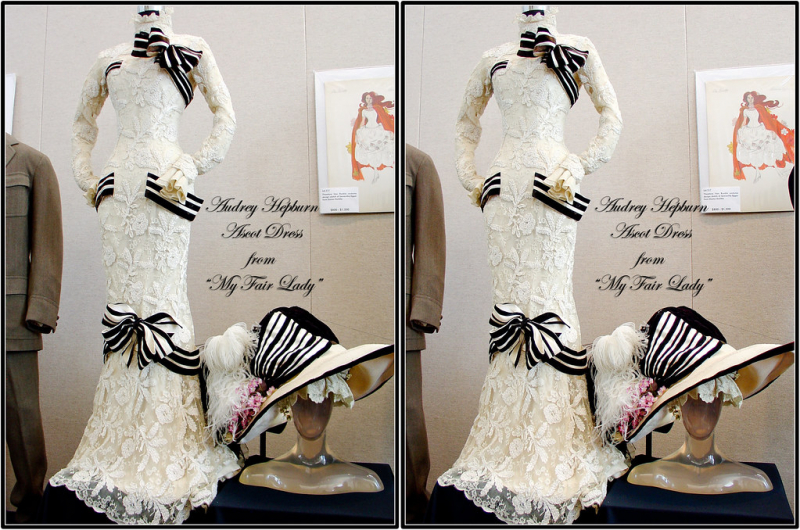
Photo: Flickr 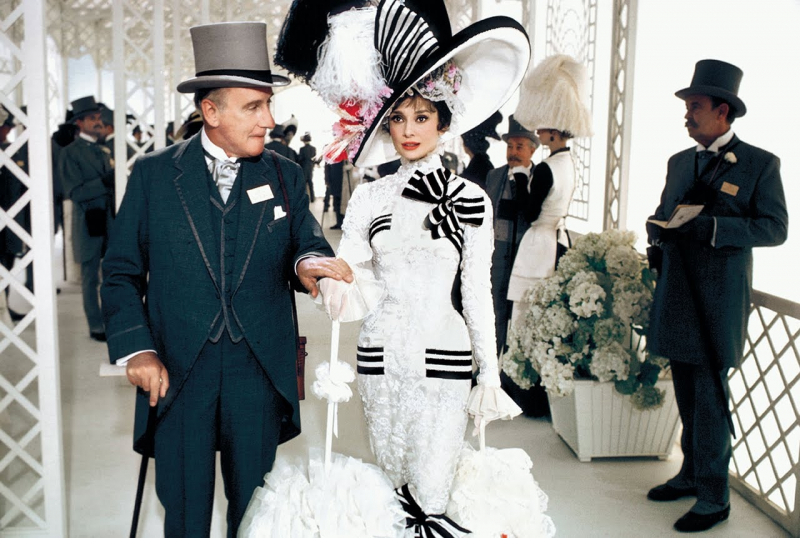
Photo: Wordpress -
Babe Ruth's 1920 Babe Ruth jersey is the oldest known New York Yankees jersey. The company that authenticated the jersey, SGC, claims it's extremely uncommon, with only a few Ruth-worn jerseys remaining. This unique piece of sports memorabilia holds a lot of weight in the baseball world, especially in America. It was the most expensive sports memorabilia ever sold before being defeated by the 1928 - 1930 Babe Ruth New York Yankees jersey.
The soiling, stains, and fabric repairs on the professional-grade wool flannel jersey prove that its owner tumbled after fly balls and slid into second base. He trotted around the bases in his trademark choppy steps more frequently. The Y in "NEW YORK" is embroidered on the double-thick button placket, indicating that the road jersey was created about 1920, according to experts. These fading pink script letters are stitched near to the Spalding manufacturer's label on the collar.
Price: $4,415,000
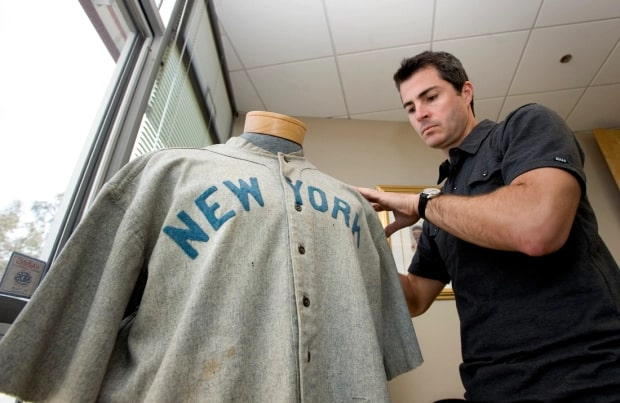
Photo: Orange Country Register 
Photo: SCP Auctions -
The sixth place in this list is the most important document in basketball history, James Naismith’s Basketball Rules. Dr. James Naismith wrote the legendary document in the winter of 1891 to create a winter sport for boys to play at a nearby YMCA. When his boss assigned him two weeks to come up with a new indoor activity for his gym class at the Christian organization, Naismith penned all 13 rules the night before the deadline. He then handed the list to his secretary, who copied it onto two pages, which Naismith then fastened to a bulletin board outside the gym.
This historic document that details the original rules of basketball was auctioned off for more than $4 million US at Sotheby's in New York in 2010. The $4.3 million sale price includes a buyer's premium. The money will go to the Naismith Foundation, which encourages sportsmanship and helps needy youngsters all around the world. David and Suzanne Booth bought it in the hopes of bringing the rules to the University of Kansas, where Dr. Naismith became the Jayhawks' first ever basketball coach in 1898.
Price: $4.3 million
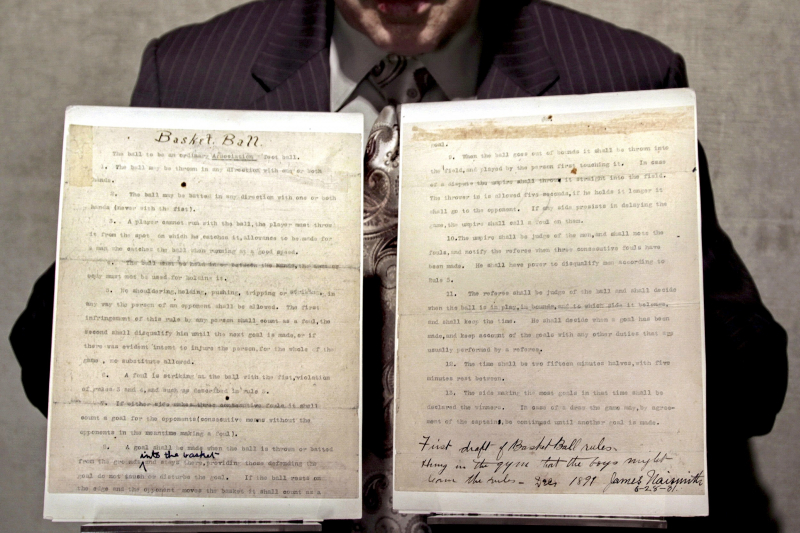
Photo: Bleacher Report 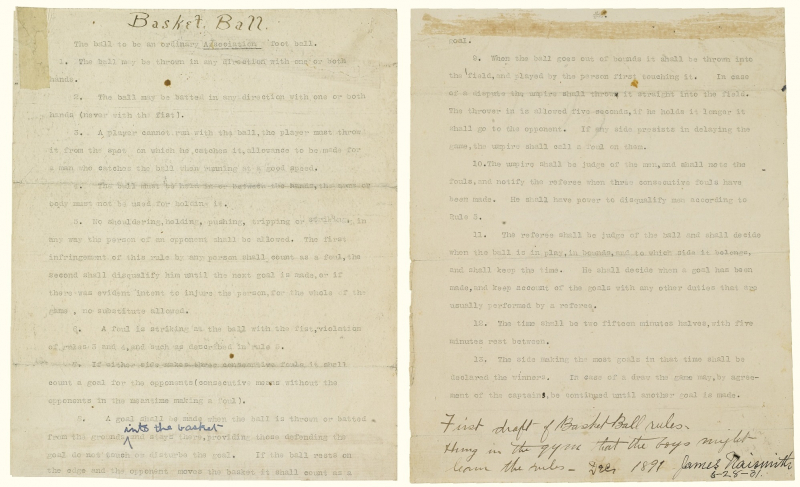
Photo: Wikimedia Commons -
While the Batmobile in the comic book was gradually modified to fit late-model vehicle style, a radical and ionic version of the vehicle debuted on television in 1966. Adam West and Burt Ward rode in a flashy, open-air crime-fighting vehicle based on a Lincoln Futura concept car. The Batmobile in the 1966 TV series had a mobile batcomputer in the trunk, as well as a complete complement of gadgets. The 1966 Batmobile was famously the work of renowned car customizer George Barris and had some unusual design characteristics. The jet turbine outlet, which first appeared on the 1960s Prototype Batmobile as a painted metal bucket, would go on to appear on every subsequent live-action incarnation of the superhero's vehicle.
The Prototype Batmobile from the 1960s live-action appearance has been the most recognized, despite the fact that purists rarely treat the campy TV series favorably. The 2013 Barrett Jackson Classic Car Auction in Scottsdale, Arizona, epitomized the Futura-based Batmobile's appeal. The original Batmobile, which was formerly owned by George Barris, was sold for $4.2 million to a bidder.
Price: $4.2 million
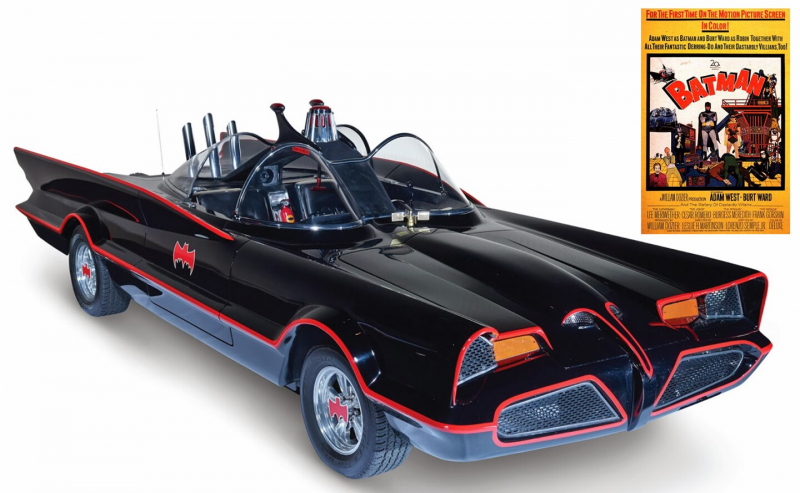
Photo: New Atlas 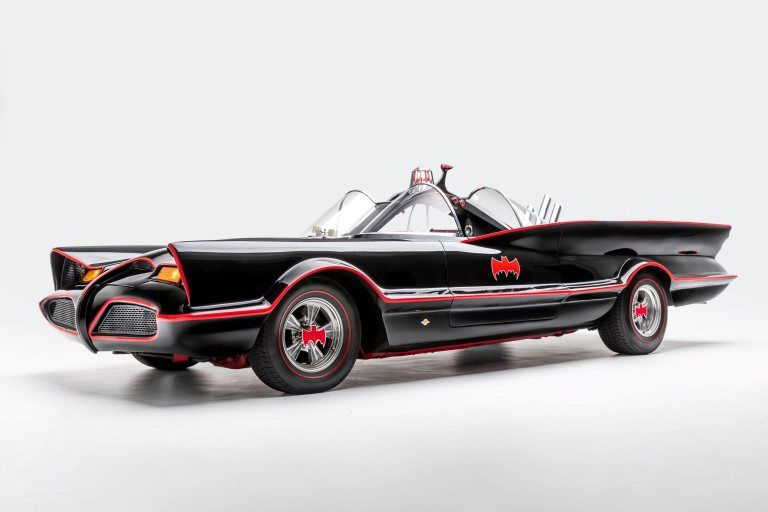
Photo: Pinterest -
Sean Connery drove the silver Aston Martin DB5 in the 1964 films "Goldfinger" and "Thunderball," in which he played a fake British spy (1965). Machine guns, a bullet-proof shield, a tracking device, a removable roof panel, an oil slick sprayer, and a smoke screen are all included, all of which are operated by "toggles and switches hidden in the center arm-rest." The red ejector seat button is revealed when the gear stick top is flipped up. A homing radar and a telephone are also fitted within the driver's door panel.
Harry Yeaggy, a US collector, traveled into the UK for the auction on Wednesday and outbid his competitors to win the automobile for 2.6 million pounds (4.1 million dollars). The car was in excellent condition, having been protected by the Aston Martin factory for its first five years until being sold to Jerry Lee, its lone non-factory owner, in 1969 for under $12,000. The automobile had only been displayed publicly on rare occasions during the previous 41 years, and its sale was a once-in-a-lifetime opportunity for Aston Martin and James Bond lovers alike.
The Jerry Lee Foundation, which funds research into techniques to decrease and prevent crime, would benefit from the proceeds of the auction.
Price: $4.1 million
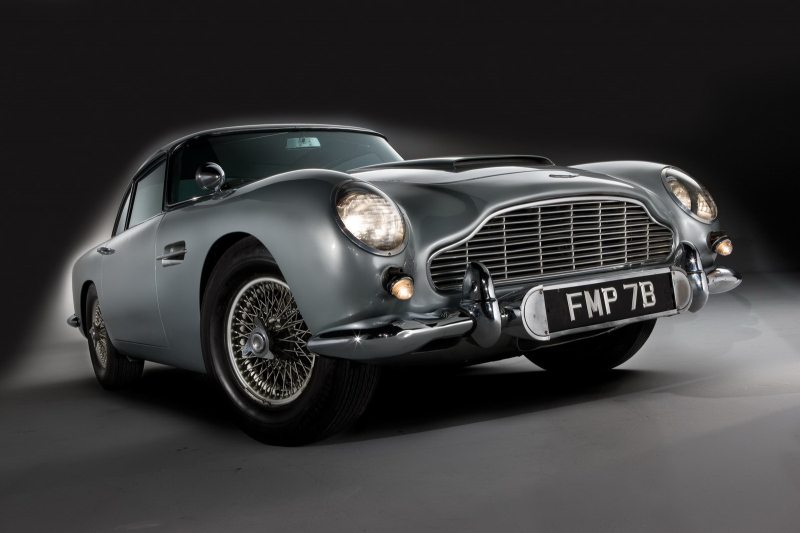
Photo: Reddit 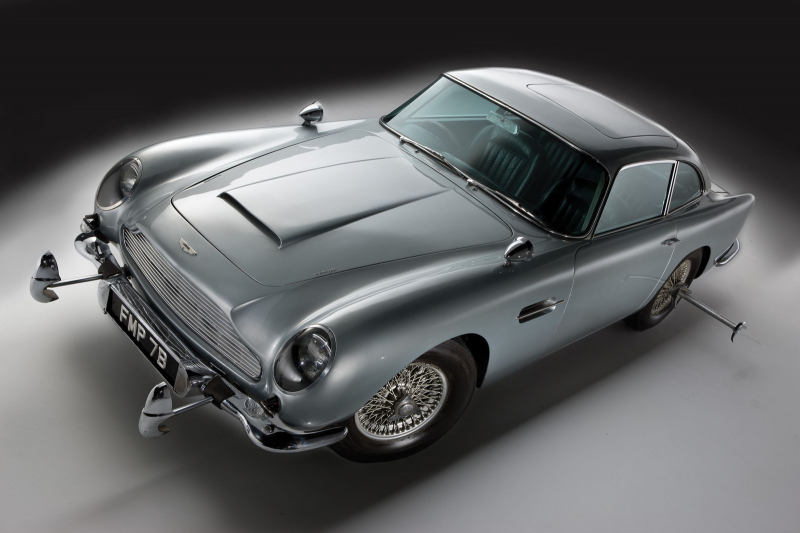
Photo: Motor Authority -
The bird statue from the John Huston–Humphrey Bogart detective thriller film "The Maltese Falcon” is one of the most recognized and sought-after movie props ever created. Steve Wynn actually spent $4.1 million for it. It's understandable. It was one of the most expensive pieces of movie memorabilia ever sold. The news of the Falcon sale made its way around the world on network news and in publications. It currently resides in a meeting room in Wynn's Las Vegas mansion, alongside two Picassos, a Matisse, and a Giacometti sculpture.
An unnamed artist, presumably Fred Sexton, a friend of Director John Huston, made the sculpture. The resin one was most likely smoothed down to match the prop's smooth, weathered appearance in the movie. The statue is the only one confirmed as having appeared in the film and is distinguished by a bent tail feather. During filming actress Lee Patrick dropped the prop while handing it to Bogart. The damage is visible at the end of the film. It was sold for nearly $4.1 million at a New York auction by a private seller who bought the prop in the 1980s but whose identity was not disclosed.
Price: $4.1 million
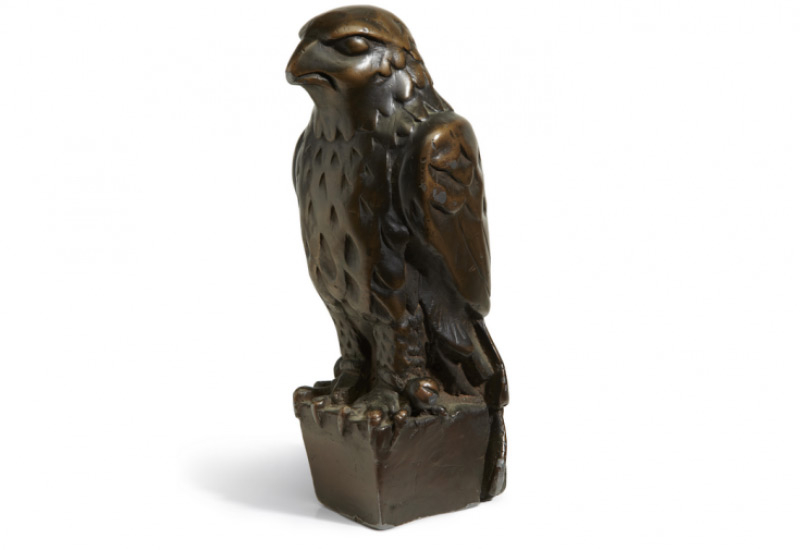
Photo: extravagani.com 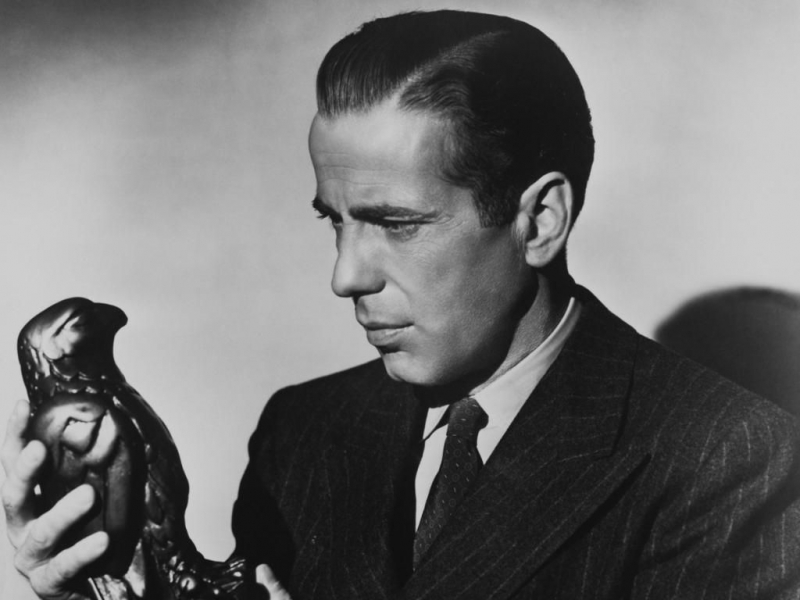
Photo: Pinterest -
The piano from "Casablanca", one of Hollywood's most romantic films, was auctioned off for $3.4 million on Monday, November 24th, 2014 to an undisclosed buyer in New York. It also places tenth in the list of most expensive memorabilia ever sold. Bonhams, the auction firm in charge of the sale, will receive a 12 percent commission. For someone ready to pay this much for a piano, you'd think it would be in perfect shape, but it has a wad of chewing gum stuck to the underside of the keyboard.
This timeless item is golden yellow with Moroccan green and gold accents. Instead of the standard 88 keys, this piano has a 58-key keyboard. The piano appeared on the screen, with Humphrey Bogart listening and Dooley Wilson playing it. Wilson did not play the piano, but tinkled the tune on the keyboard. Humphrey Bogart hides the letters of transit in the piano, which plays a key role in the film. The piano is the epicenter of the café's activity.
Price: $3.4 million
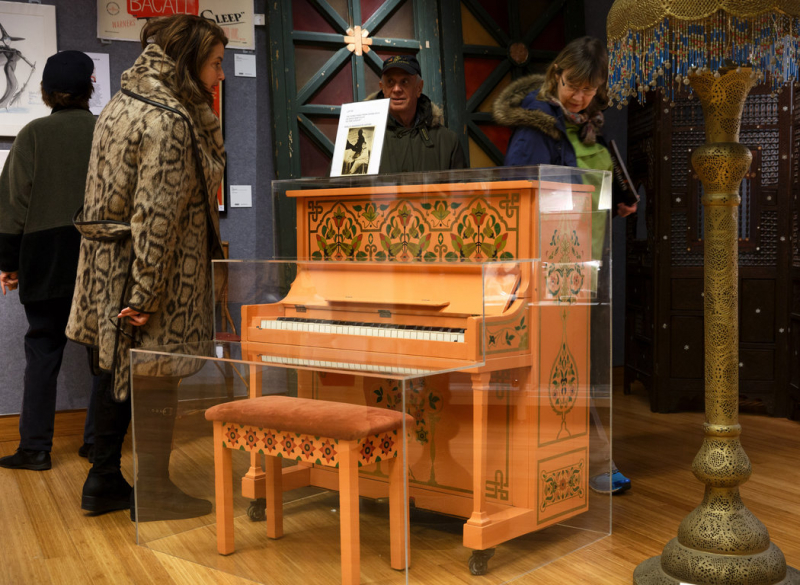
Photo: The New York Times 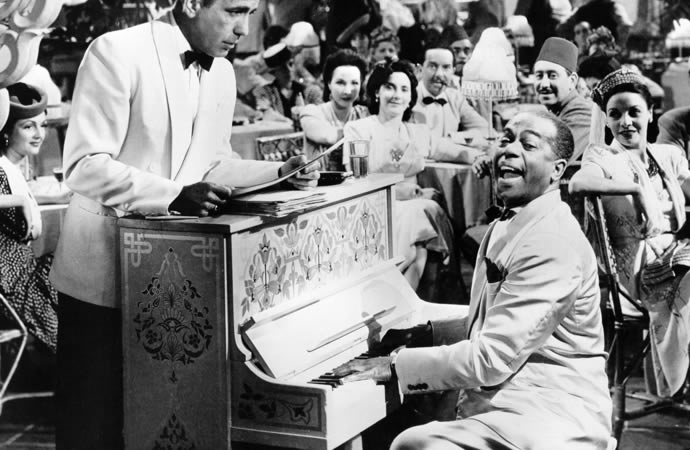
Photo: Luxurylaunches












